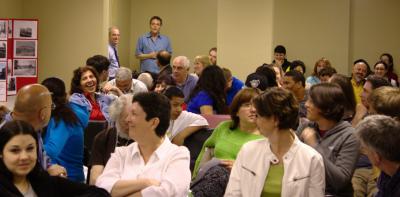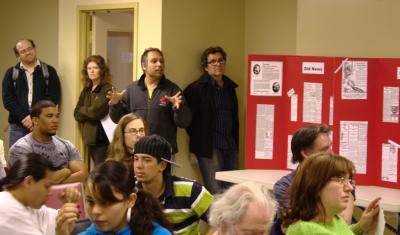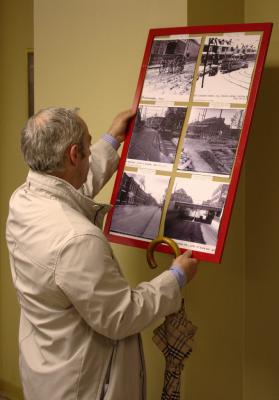How things went at the first meeting

The first Fuzzy Boundaries community meeting, held at Perth Avenue Housing Cooperative on May 13, proved a great start to our name-finding process. The room was full and the discussion, as expected, was lively. Before the talk got started, people milled around and looked at the various photo displays that offered a glimpse of the community in bygone days.

After introductions by Fuzzy Boundary member Chris Kwaczek, Kevin Putnam set the tone by laying out the group’s intentions: to inspire the community (newcomers and old-timers alike) to find a name; and through that name to foster a sense of collective identity. He addressed concerns about gentrification – “We could start calling the neighbourhood Rosedale tomorrow, but it won’t make the houses any bigger” – and underscored the fact that this is a resident-led initiative, rather than one driven by real estate agents or developers. Whether we act or not, this “orphaned zone” won’t be nameless for long. A growing number of residents like the idea that we should be the ones to choose a name for our neighbourhood – if we don’t, the developers will.

Next up, life-long area resident and local history buff Michael Monastyrskyj spoke about his personal experience growing up in the neighbourhood, and how he has seen it change over time, moving from a largely Ukrainian and Italian population, to a predominantly Portuguese population, to the highly diverse community we have now. He made interesting observations about how one defines a neighbourhood, and how our personal interpretations of this will differ depending on our lifestyles, our routes to work, and so on. (You might also be interested in his blog, http://bloorlansdowne.blogspot.com/, which he bills as “My personal take on life in a unique west-end Toronto neighbourhood.”)

After Michael, former City of Toronto Planner Beate Bowron spoke to the group about the various elements that might come into play when defining a community. She listed nine of these including old municipal boundaries, historic figures and cultural or ethnic groups. Ms. Bowron offered valuable, objective insight from a planner’s perspective, and suggested that the area’s railroad tracks form a well-defined (rather than fuzzy) boundary.
More photos from the event can be found in our Photo Gallery. Bios of our guest speakers can be found here.
- By admin at 2009/05/30 - 9:45pm




Recent comments
8 years 4 weeks ago
8 years 4 weeks ago
8 years 4 weeks ago
8 years 5 weeks ago
8 years 5 weeks ago
8 years 5 weeks ago
8 years 5 weeks ago
8 years 5 weeks ago
8 years 5 weeks ago
8 years 5 weeks ago